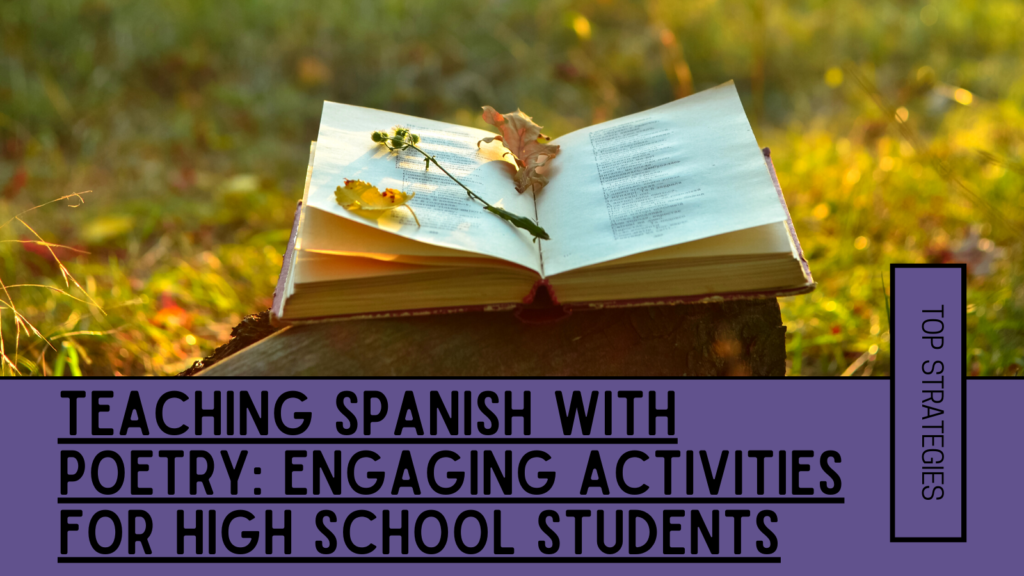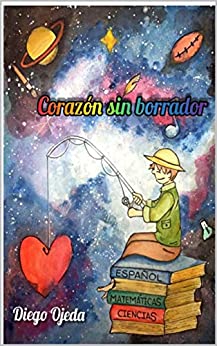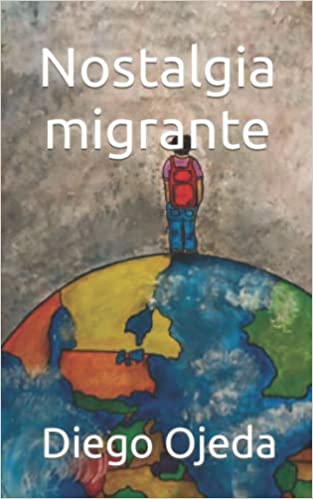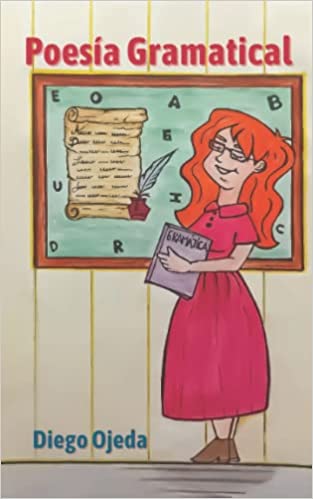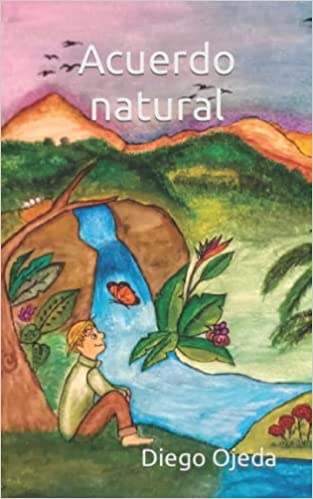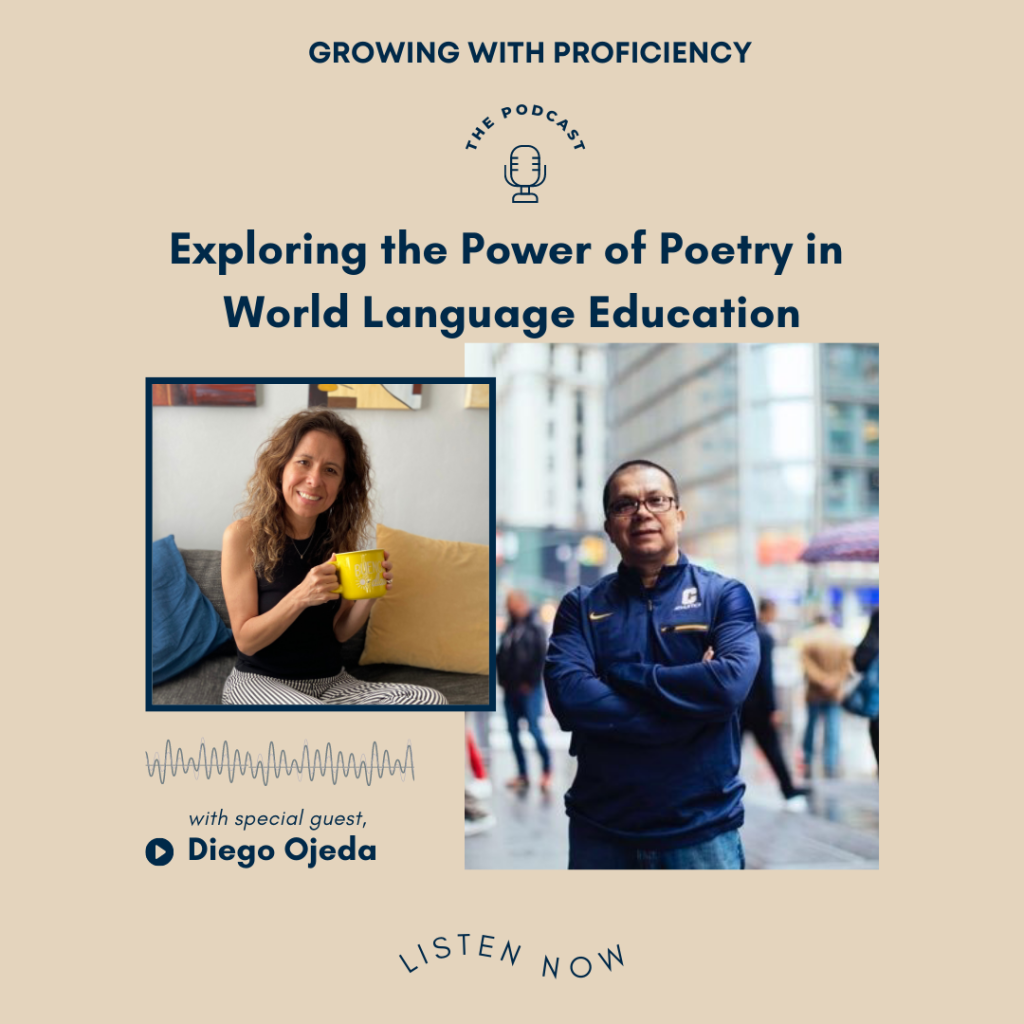National Poetry Month is here! Let’s talk about some ideas of how you can integrate poetry in all levels of your Spanish classes.
This last year, I have learned so much about doing just that from Diego Ojeda, and I am so grateful for everything he has been sharing with world language teachers about poetry in the classroom. In fact, most of the ideas I am about to share with you are a compilation of takeaways I have learned from him and ELA teachers.
First, why should we use poetry in our Spanish classes?
Diego beautifully explains the importance of bringing poetry to our classes, not just one time, but throughout the year so that learners can learn how to truly connect with it and enjoy it.
This is because:
- Poetry opens a door to relevant topics for learners.
- Poetry allows learners to creatively self-express.
- It supports acquisition of the language by supporting the use and contextualization of vocabulary that is meaningful to the learners.
- The poem should be level appropriate and accessible to your learners.
- It is a poem that the teacher can easily connect to the learner taking into account the students’ real (and not superficial) interests.
- The poem motivates and creates joy and excitement.
- The content of the poem can build community through rich discussions.
Practical and Effective Ideas to Integrate Poetry
The key for the following activities is that the poem must be relevant and comprehensible to the learner. With that taken into account, you can use these activities with any poem throughout the year.
ACTIVITY #1 – GRAFFITI BOARD
Diego shared about this activity and many other activities in our most recent Instagram conversation. Visit the recording here.
For this activity, learners will create a visual representation of the poem using words and images on one lengthy piece of bulletin board paper or simply on the teacher’s white board. Learners can write lines or phrases from the poem that they are understanding and/or connecting. Depending on the level, students can add their own thoughts, interpretations, reactions, and decorate the board with relevant images or symbols.
This activity encourages students to engage with the poem on a deeper level, as they work collaboratively to create a visual representation of the poem’s meaning and themes.
ACTIVITY #2 – FINISH THE POEM!
For this activity, you will need one slide with the first three lines of a four line stanza, and intentionally leave out the fourth line.
Then, you will divide the class in groups and provide 5-10 minutes to have your students come up with the last line of the poem. Have learners share what they produced with the entire class.
If you have novice learners, create and print a document to support your learners by reminding them of common verbs and possible rhyming words they can use to create their line.
If you would like to further explore these ideas from the master teacher himself, check out the following video with Sr. Ojeda. It is very interactive and although it is a recording, you will have the opportunity to pause the video and try the variety of ideas Diego shares. It is a must see!
ACTIVITY #3 – BLACK OUT POETRY
The following activity can be used with any level. If you have never tried it before, there will be a tiny learning curve, but once you grasp it, this strategy will be added to your teaching tool belt and you will be able to use it with poems, text, stories, and songs…I am talking about black out poetry!
Resources to help you with setting up black out poetry!
I always say that ELA teachers have some of the best ideas!!! Black out poetry really proves this point.
Basically, blackout poetry is a form of creative expression where learners will take a poem (on paper or via a Google Slide) and they will select and black out or cover certain words to create a new and original poem. The words that are left recreate a new poem and it often results in a totally different meaning and interpretation of the poem.
This poetry activity is perfect for your Spanish classes because it can be used with any poem and with any level. Also, it is a fun and accessible way to explore language, creativity, and self-expression.
The following are two digital examples my intermediate students created using Sor Juana Inés de la Cruz’s poem “Hombres necios.”
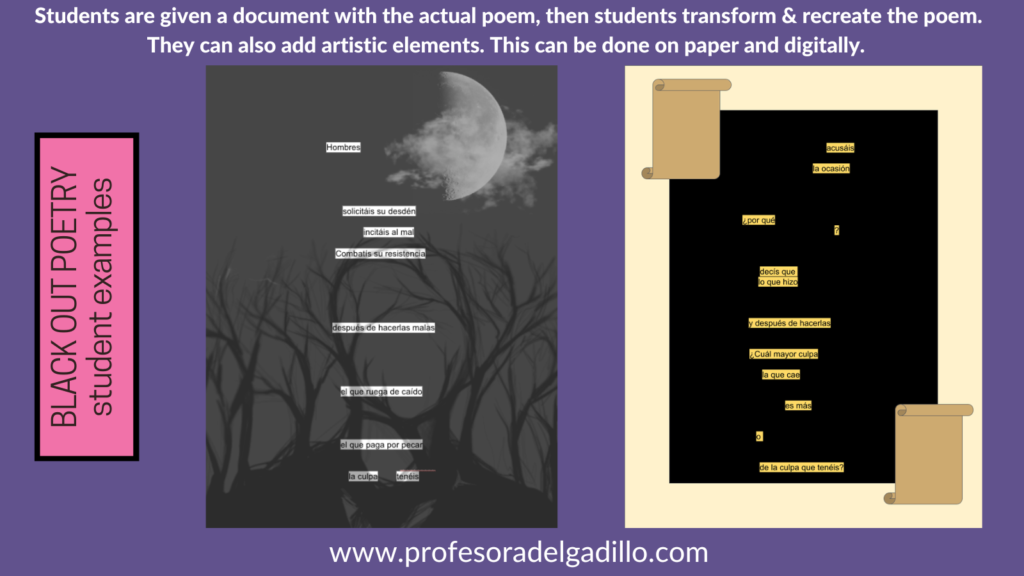
Maris Hawkins, co-author of Common Ground: Second Language Acquisition Theory Goes to the Classroom and Spanish teacher recently blogged about this wonderful activity as well, if you are interested in more details and perspectives, please visit her blog post too!!!
Trust me, you want to check it out as she even shared the rubric she used to grade her learners!!!
The following video will explain very well how to guide your students to create their own version of blackout poetry if you want to try this activity on paper.
If your students prefer to engage in blackout poetry digitally, then I suggest the following video for you, the teacher.
This is the same video I used to learn to understand how to set up my document (I did it on slides though) and provide instructions to my learners. If you want to try out this activity digitally, and then be able to support your students through this activity, it is important that you have a good grasp on it.
Finally, this last video is wonderful to share and guide your learners to work with blackout poetry digitally. This is the video you share once the digital document has been shared with them.
What Can a Lesson Plan Sequence Look Like?
There are so many possible answers to this question. If you have worked with creating lessons for songs, it would be helpful to approach it that way, though you don’t have to.
Here are some suggestions that can guide you in your planning:
- Introduce the poem by asking learners to brainstorm words or phrases related to the poem’s theme. Write their responses on the board or have them type their entry via a tool like Jamboard. If the learners are novice low or mid, provide a word cloud to guide this brainstorming.
- Introduce the poet and the poem. If you believe it will be relevant to the study, consider presenting some information about the author’s background.
- Distribute copies of the poem and ask students to read it silently or aloud. Depending on the level, decide if you will discuss the poem’s meaning, themes, and literary devices. With novice students, you can have them do traffic light reading of the poem instead.
- Divide the class into small groups and have them select a stanza to illustrate on a white piece of paper.
- In those same groups, have learners do the previously mentioned FINISH THE POEM activity. You can decide to give a different stanza to different groups. For upper levels, you can have them create their own short poem by changing specific words like adjectives or nouns, another one of Diego’s ideas presented at our recent Instagram live.
- Ask each group to share their stanza (or poem).
- Close the lesson with the graffiti board activity mentioned at the beginning of this blog post.
This is just an idea of what a lesson could look like, but as you can see, it can be adapted to other simple poems, different lesson objectives, unit themes, and different proficiency levels.
Where to find poetry resources for your Spanish class?
To make poetry accessible and enjoyable to our learners, Diego has created so many wonderful poetry books to make poetry comprehensible, relevant, and attainable for your students.
You can purchase his books through Amazon or Command Performance Books. His books are also available in French.
Thank you for reading! Please feel free to share this blog post so that it may reach others.
Also, I exclusively share about resources and ideas I have tried in my own classroom. I have seen how much my learners have enjoyed Diego’s poems and activities, and that is the reason I am sharing these with you. There is no commission or incentive involved in my promotion of these materials, as my sole motivation is to promote the facilitation of acquisition, engagement, and community building among other benefits that these poems provide.
Looking for more ideas on the uses of poetry in Spanish class?
Two of my favorite people, Claudia Elliott & Diego Ojeda, have come together for this conversation at The Growing with Proficiency Podcast. Take a listen by clicking the link or clicking the image!

